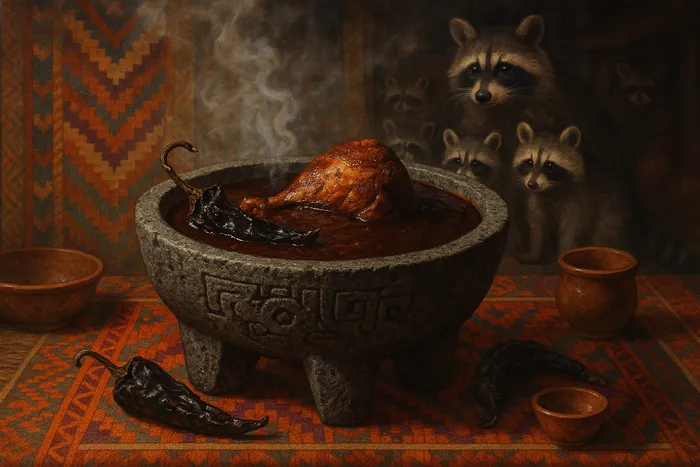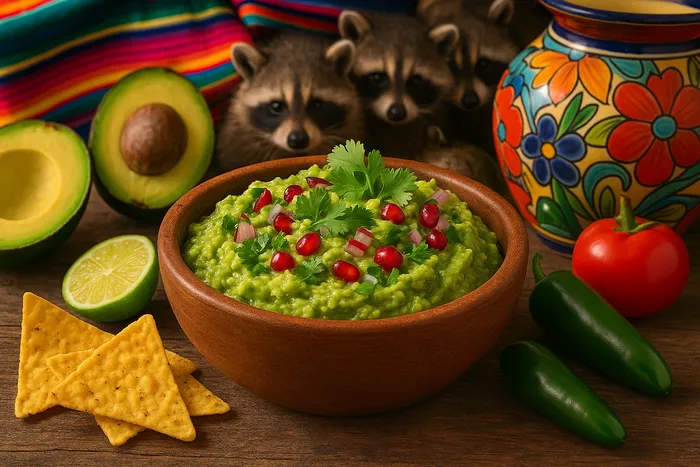ingredient
Chili chronicles

Raccook
December 6, 2024
5min read

Chilies provide far more than heat - they contribute distinct flavors, aromas, and textures that vary dramatically between varieties. Understanding these differences allows for better ingredient selection and more nuanced cooking across different cuisines.
Heat Measurement and Science
The Scoville scale measures capsaicin concentration, but heat perception varies based on preparation method, seeds inclusion, and individual tolerance. Fresh chilies often taste hotter than dried versions of the same variety due to moisture content and preparation differences.
Capsaicin concentrates in the placenta (white inner parts) and seeds, not the flesh itself. Removing these parts significantly reduces heat while maintaining flavor. Different preparation methods - roasting, drying, smoking - alter both heat perception and flavor profiles.
Heat builds cumulatively in the mouth and affects different taste receptors. Understanding this helps in balancing heat levels throughout meals and creating dishes with appropriate heat progression.
Fresh Chili Varieties
Jalapeños provide moderate heat with grassy, bright flavors. They work well fresh in salsas like Salsa Verde or pickled for tangy applications. When smoked and dried, they become chipotle chilies with completely different flavor characteristics, adding depth to dishes like Mushroom Birria Tacos.
Serranos offer higher heat than jalapeños with thinner skin and more intense flavor. They're commonly used in Mexican preparations like Mexican Guacamole and Thai cooking like Thai Green Curry Vegetables where bright heat is desired without overwhelming other flavors.
Habaneros and scotch bonnets provide significant heat alongside fruity, floral notes. These characteristics make them valuable for Caribbean and Central American cuisines where heat and fruit flavors complement each other.
Dried Chili Applications
Ancho chilies (dried poblanos) contribute mild heat with sweet, raisin-like flavors. They're essential in Mexican mole preparations like Mole Negro Oaxaqueño and work well in dishes requiring depth without overwhelming heat, such as Cochinita Pibil.
Chipotle chilies add smokiness alongside moderate heat. The smoking process creates complex flavors that enhance barbecue preparations and hearty stews like Birria Tacos. Different chipotle varieties provide different smoke intensities, adding complexity to fermented preparations like Fermented Salsa.
Guajillo and New Mexico chilies offer moderate heat with earthy, slightly sweet characteristics. They're commonly used in red sauces and provide good base heat for complex preparations.
Regional Usage Patterns
Mexican cuisine uses specific chili varieties for different applications. Poblanos for chiles rellenos, serranos for fresh salsas like Mexican Street Corn Elote, and various dried chilies for mole preparations like Mole Negro Oaxaqueño. Each serves specific textural and flavor purposes beyond heat contribution.
Asian cuisines employ chilies differently. Thai bird's eye chilies provide intense heat in small quantities, essential for dishes like Thai Green Curry Vegetables and Thai Noodle Pad. Korean gochugaru offers moderate heat with sweet undertones perfect for Korean Kimchi and stews.
Indian regional cuisines favor different chili varieties - from mild Kashmiri chilies that provide color without excessive heat in dishes like Indian Butter Chicken to fierce ghost peppers used sparingly in northeastern preparations. Ethiopian Injera Doro Wat demonstrates how berbere spice blend balances multiple chili varieties for complex heat.
Preparation Techniques
Roasting chilies develops different flavor compounds and reduces perceived heat slightly. Different roasting methods - open flame, oven, dry pan - produce varying results in terms of flavor development and skin removal ease.
Rehydrating dried chilies requires proper technique to extract maximum flavor. Soaking times vary by chili type and intended use. Over-soaking can create bitter flavors, while under-soaking limits flavor extraction.
Creating chili pastes and powders allows for concentrated flavor storage and consistent heat distribution. Different grinding techniques and added ingredients create distinct paste characteristics suitable for various applications.
Heat Management Strategies
Building heat gradually throughout a meal prevents palate fatigue and allows for better flavor appreciation. Starting with mild heat and increasing intensity works better than overwhelming heat early in the meal.
Dairy products effectively neutralize capsaicin due to casein proteins. Sugar and acidic ingredients provide temporary relief but don't neutralize heat as effectively as dairy products.
Understanding heat distribution in dishes helps create balanced preparations. Heat sources placed early in cooking distribute differently than those added at the end, affecting both intensity and flavor integration.
Storage and Preservation
Fresh chilies store differently based on variety and intended use. Thicker-skinned varieties like poblanos last longer than thin-skinned serranos. Proper storage extends usability and maintains heat levels.
Drying chilies preserves them while concentrating flavors. Different drying methods - air drying, oven drying, smoking - create different final products suitable for various applications.
Fermented chili preparations like sriracha or gochujang combine preservation with flavor development. These techniques connect to broader Fermentation Journey principles while creating shelf-stable heat sources. Korean Kimchi demonstrates how chilies contribute both heat and fermentation flavor development.
Connecting Chili Knowledge
Understanding chili usage enhances appreciation for regional cuisines discussed in country guides. Thai cuisine's heat balance in dishes like Thai Green Curry Vegetables and Cucumber Salad Sambal becomes clearer with chili variety knowledge. Mexican preparations like Birria Tacos and Mole Negro Oaxaqueño benefit from understanding specific variety characteristics. Indonesian heat in Beef Rendang showcases how chilies integrate with aromatic spices.
Salt's role in chili preservation and flavor enhancement connects to Salt Stories applications. The patience required for proper chili preparation and fermentation mirrors techniques discussed in other ingredient explorations.








